- The Stevens-Henager Salt Lake City/Murray campus was established in August 1999, and has earned a reputation for producing competent, professional graduates who are prepared for the many opportunities Salt Lake City has to offer. In fact, US News and World Report recently called Utah "a veritable job machine," observing that "Utah is emerging as one of the nation's premier high-tech meccas," with more software enterprises than California's Silicon Valley and one of the nation's largest concentrations of biotech companies. At Stevens-Henager College, our mission is to provide the real-world knowledge and skills necessary to start a career in today's marketplace. We strive to ensure that our students achieve success in our career training programs and that their success will culminate in entry-level or mid-level employment or advancement in their current career field. We do this by assisting our students through the practical challenges encountered in the workplace and providing them with degree programs that can help them gain a greater understanding of their field, so they can achieve a rewarding career.
School Highlights
Stevens-Henager College served 104 students (100% of students were full-time).
The college's student:teacher ratio of 3:1 was lower than the state community college average of 16:1.
Minority enrollment was 65% of the student body (majority Asian), which was more than the state average of 29%.
School Overview
Stevens-Henager College
(UT) Community College Avg.
Carnegie Classification
Not applicable, not in Carnegie universe (not accredited or nondegree-granting)
Not applicable, not in Carnegie universe (not accredited or nondegree-granting)
Institution Level
Four or more years
Four or more years
Institution Control
Private not-for-profit
Private not-for-profit
Total Faculty
36 staff
154 staff
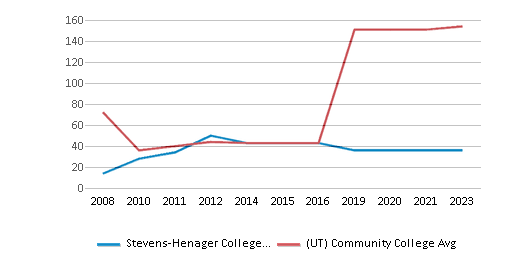
Student Body
Total Enrollment
104 students
2,323 students
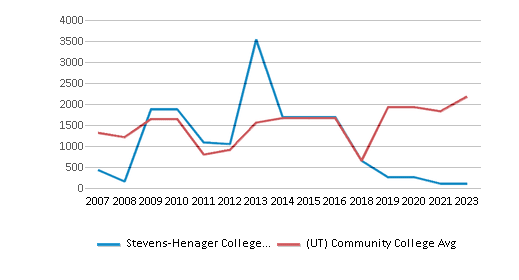
Student : Teacher Ratio
3:1
16:1
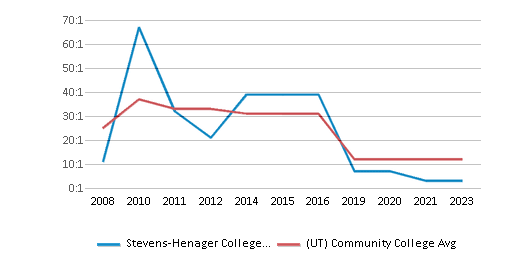
# Full-Time Students
104 students
621 students
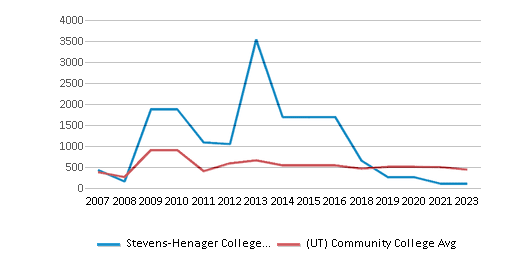
# Part-Time Students
n/a
3,394 students
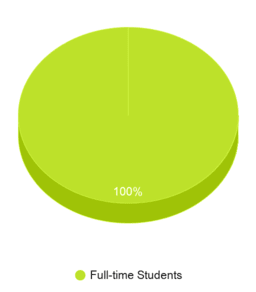
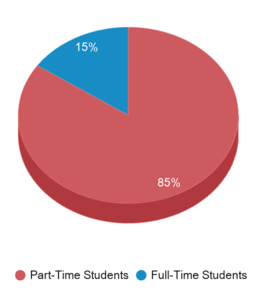
# Enrollment Undergraduate
176 students
325 students
# Full-Time Undergraduate Students
76 students
621 students
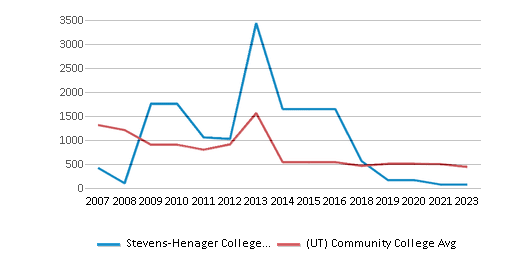
# Full-Time Graduate Students
28 students
49 students
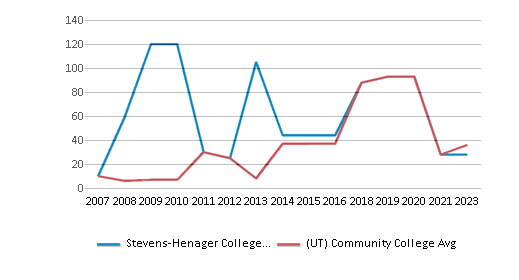
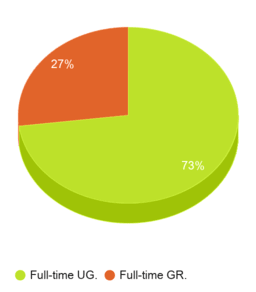
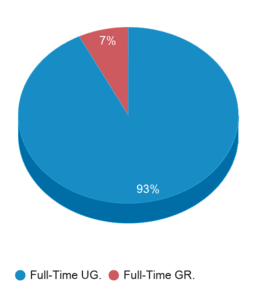
# Part-Time Undergraduate Students
n/a
3,394 students
# Part-Time Graduate Students
n/a
37 students
Total Dormitory Capacity
n/a
750 students
% American Indian/Alaskan
1%
1%
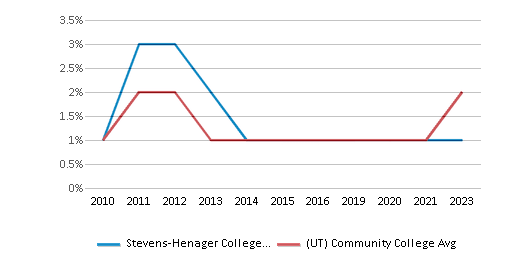
% Asian
34%
2%
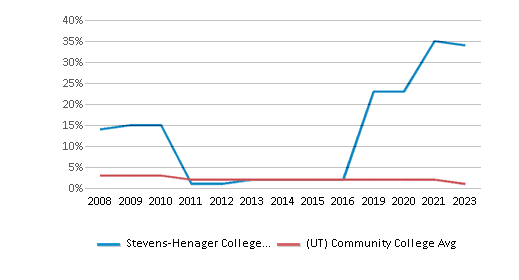
% Hispanic
11%
13%
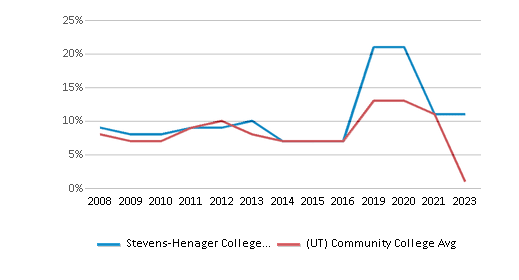
% Black
2%
1%
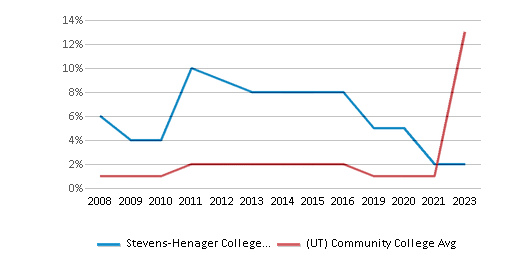
% White
35%
71%
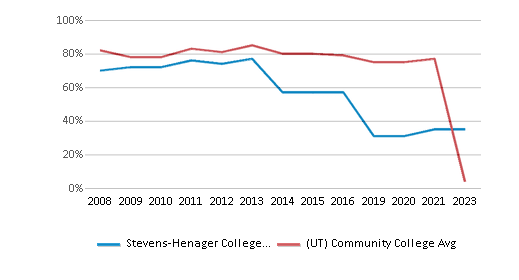
% Hawaiian
2%
1%
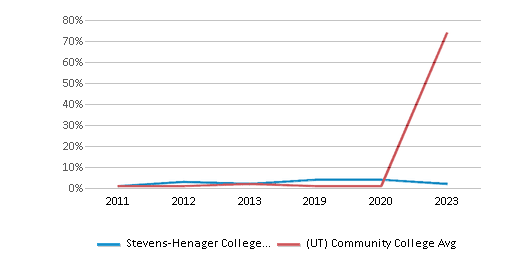
% Two or more races
6%
3%
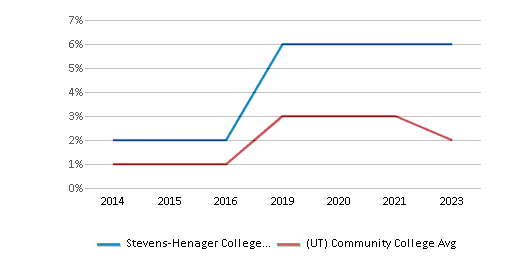
% Non Resident races
4%
4%
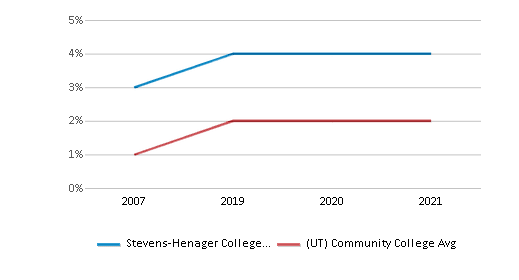
% Unknown races
5%
4%
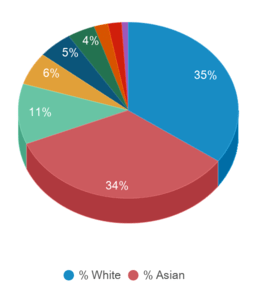
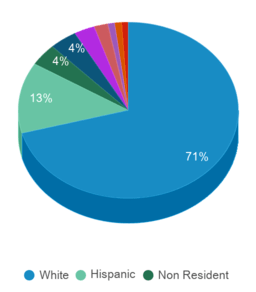
Diversity Score
0.75
0.47
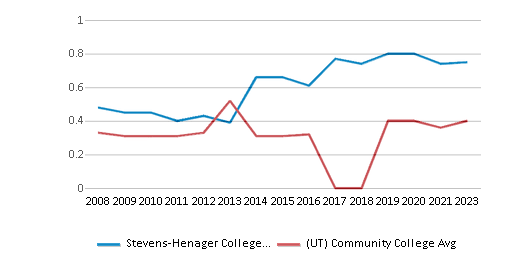
College Completion Rate (Students who graduate in less than 4 years)
n/a
0.6526%
College Completion Rate (Students who graduate in 4 years or more than 4 years)
3.83%
0.4651%
Average Graduate Earnings (10 Years)
$33,600
$32,700
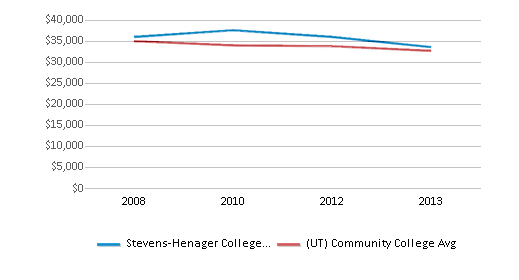
Tuition and Acceptance Rate
Private State Tuition Fees
$16,968
$14,216
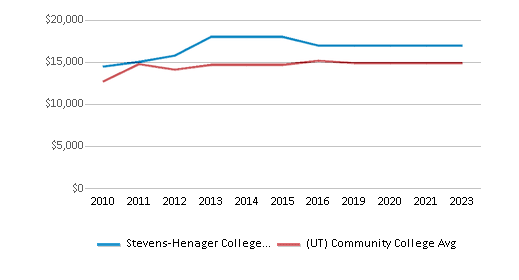
% Students Receiving Some Financial Aid
100%
73%
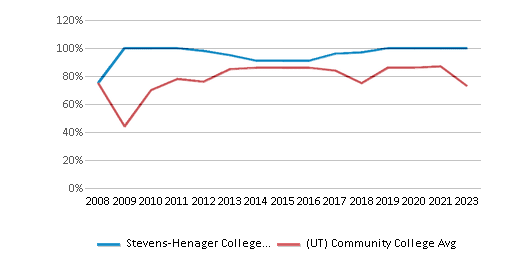
Median Debt for Graduates
$26,807
$15,972
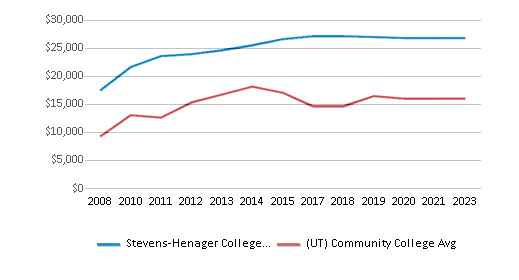
Median Debt for Dropouts
$8,226
$6,334
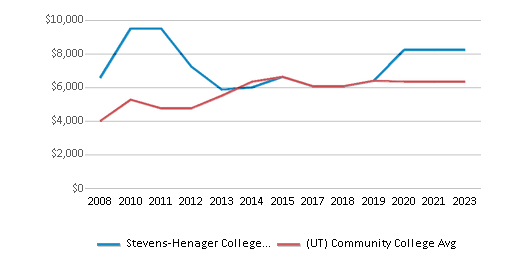
Acceptance Rate
n/a
93%
SAT Reading
n/a
545
SAT Math
n/a
550
ACT Composite
n/a
23
ACT English
n/a
24
ACT Math
n/a
23
Source: 2023 (or latest year available) Integrated Postsecondary Education Data System (IPEDS)
Frequently Asked Questions
How much does Stevens-Henager College cost?
Stevens-Henager College's private state tuition is approximately $16,968.
Recent Articles

Obtaining Your Bachelor's Degree at a Community College
Explore the evolving landscape of community colleges offering bachelor's degrees, addressing affordability, accessibility, and workforce needs.

A to Z of Community College Certificates and Courses
From business and healthcare to technology and skilled trades, the article showcases the breadth of options available to students seeking to enhance their knowledge, develop new skills, or pursue career advancement.

What is a Community College?
This comprehensive guide explains what a community college is, its history, and its role in higher education. It covers the types of programs offered, differences from four-year colleges, benefits of attending, and important considerations for prospective students, providing valuable insights for those exploring educational options.






